Learn how to cut a pomegranate the easy way, with no stained cutting boards, no red-spattered shirts, no mess!
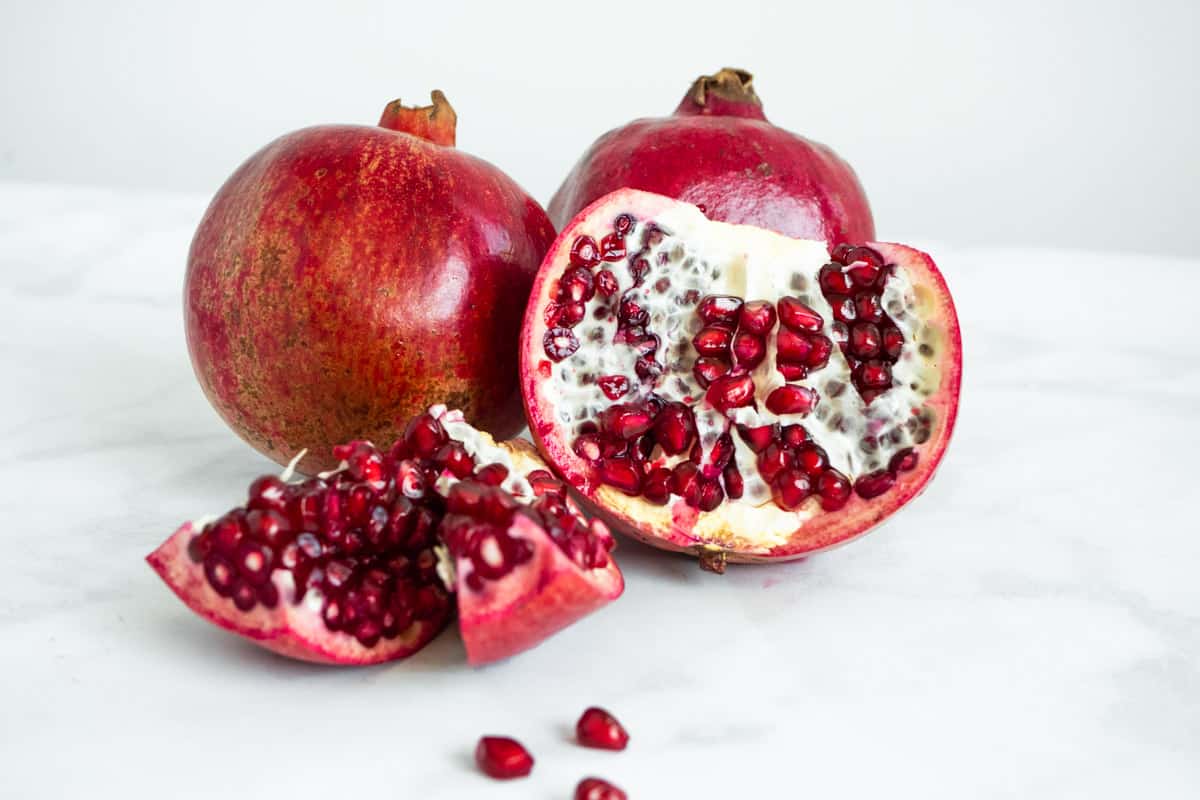
While the plastic tubs at the grocery store come in handy in a pinch, learning how to cut a pomegranate is well worth the effort. It’s less expensive, far more flavorful, and surprisingly easy with this simple method.
What’s more, a cup of fresh, juicy pomegranate seeds is culinary gold. Toss them in salads, add them to chicken stew, use them as a garnish for roast meat, cauliflower, and fish–the list goes on! You can even juice them to make pomegranate molasses or pomegranate martinis (say less).
Table of Contents
How to Cut a Pomegranate
I tested many ways to cut a pomegranate, including trendy “hacks” where you hit the back of the fruit very hard with a wooden spoon. By the time I got ten seeds out of the fruit, I was covered in juice. I’m convinced this technique is just for social media, unless you have an incredibly perfectly ripe pomegranate. Here is the best, easiest, and cleanest method (for real):
- Get ready. Use a small, sharp knife to draw a circle along the top of the pomegranate, piercing just through its skin. Peel the top off with your hands and discard.
- Section the pomegranate. Look at the top of the pomegranate–you should see the white pith making a star-like shape at the top. These are the different sections. Run your knife from top to bottom of each section, piercing just the skin of the pomegranate.
- Add the sections to a bowl of cold water. Flip the pomegranate upside down over the bowl of water. Push on the bottom of the pomegranate with your thumb to open it, then pop out each section into individual pieces.
- Remove the seeds. Carefully peel back any thin white pith covering the seeds. Then, with the pomegranate submerged in water, very gently run your thumb along the peel to remove the seeds. If you notice any stubborn pith or peel sticking to the seeds, remove it.
- Skim off the pith. Most of the seeds will sink to the bottom of the water, with the white pith floating at the top. Skim off and discard the pith, then drain.
How to Use Pomegranate Seeds
You can snack on pomegranate seeds whole, with a spoon, or straight from the shell like an orange wedge. They’re also
- Sweet and savory salads, like arugula chicken salad or spinach and mango salad.
- Stuffed or roasted vegetables, like eggplant and acorn squash.
- Roast meat and fish, from chicken, to salmon, to beef.
- Cocktails, like this vibrant red pomegranate martini. Or, for a non-alcoholic option, try a spiced pomegranate fizz mocktail.
- For breakfast, like on top of Greek yogurt with granola and a drizzle of quality honey.
- Reduce the juice for pomegranate molasses, then use in classic Middle Eastern dishes like Fesenjan (Persian Pomegranate and Walnut Chicken Stew) to Muhammara (Roasted Red Pepper Dip).
How to Pick a Pomegranate
Like watermelon or pineapple, pomegranate is tricky to judge until you cut into it. If you’re making something that requires fresh pomegranate seeds, I always recommend buying at least three. You can always freeze the seeds for later (tips below). Here are good signs of ripeness:
- Color: Look for a deep red color all over the fruit. This is not a hard-and-fast rule, as some brownish pomegranates are ripe, but a deep red is typically a good sign.
- Tight, firm skin: Mushiness or big cracks indicate spoilage.
- Weight: The juicier the pomegranate, the more it’ll weigh. Look for pomegranates that feel heavy for their size.
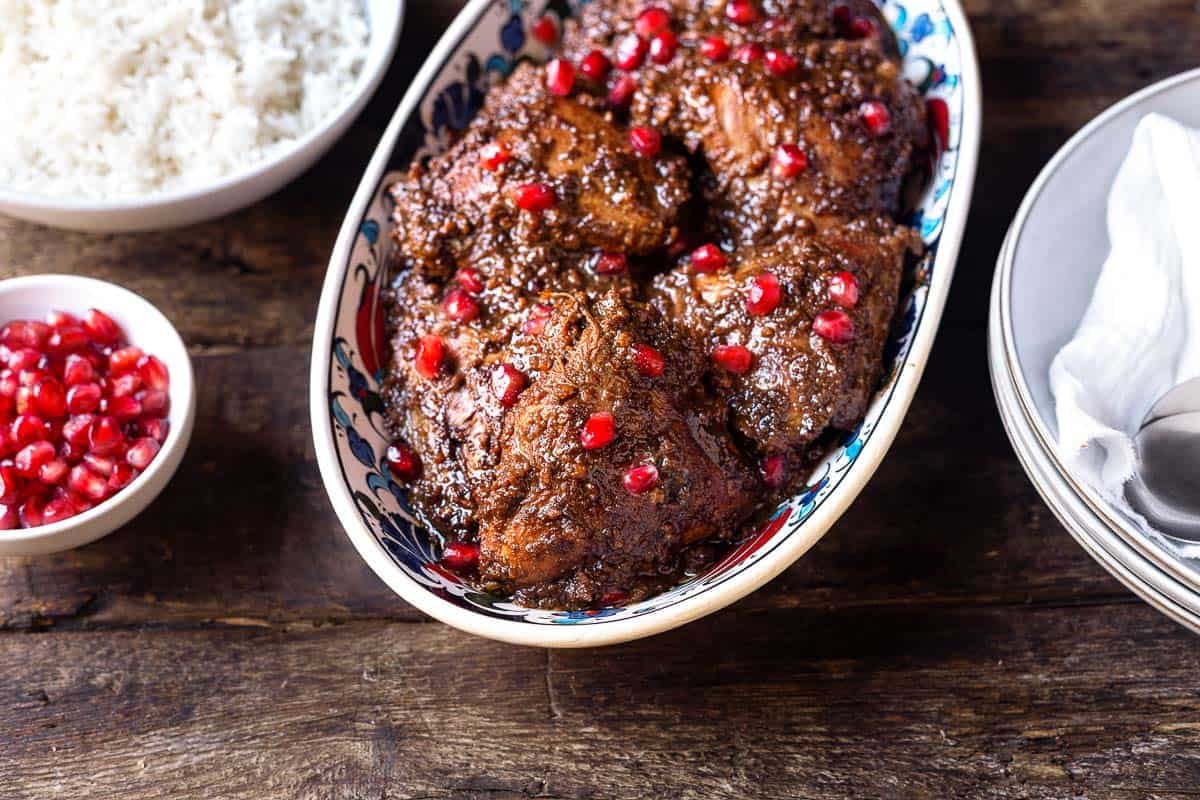
How to Juice Pomegranate Seeds
You can, of course, transfer the seeds to a fancy juicer, but it’s not necessary. You have two options to juice pomegranate by hand:
- Use a hand juicer (messier): Cut your pomegranate into pieces small enough to fit into your juicer. Working with one piece at a time, add each piece to the juicer with the cut side facing down. Squeeze steadily into a large bowl. Fair warning! There will likely be splatter.
- Use a plastic bag. Set a fine mesh strainer over a large bowl. Place the pomegranate seeds into a large sealable plastic bag (do this in batches if you have a lot of seeds). Seal the bag, pushing out most of the air as you go. Use a rolling pin or heavy pan to whack the seeds, bursting them and releasing their juice. Pour through the strainer into the bowl, reserving the juice and discarding the small crunchy part of the seed.
How to Eat Pomegranate
You can eat the whole pomegranate seed, crunchy bit and all. Pomegranate seeds have two parts: the tougher interior and the juicy red fruit, called the “aril,” that surrounds it. In fact, according to the FDA, whole pomegranate seeds boast 4 grams of fiber compared to 0.1 grams in the strained juice. And we can all use a little more fiber in our lives, right?
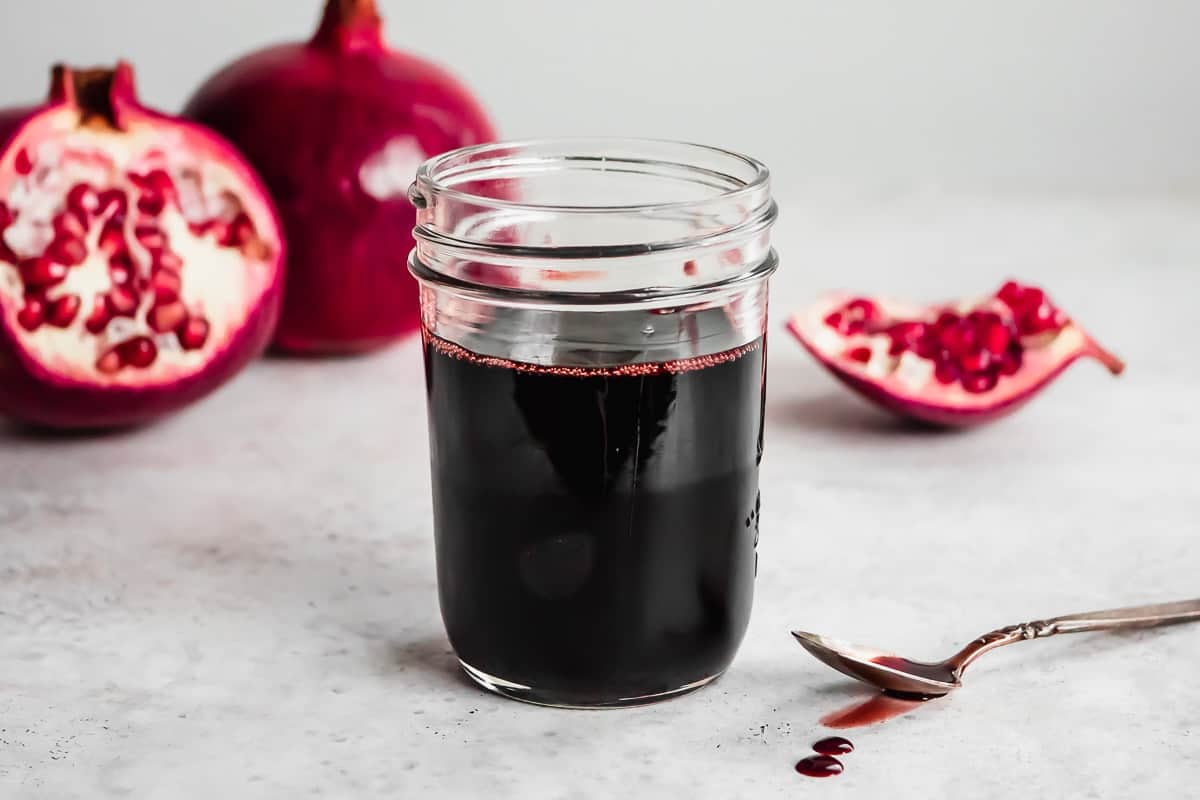
How to Store Pomegranates, Pomegranate Seeds, and Pomegranate Juice
The key to juicy, tart and sweet pomegranate seeds is storing them well so they stay fresh. Just like storing herbs correctly, they’ll last longer and taste better.
- To store whole pomegranates: Keep them in a cool, dry place until they’re heavy with a deep red color, which means they’re fully ripe. Use them or move them to your refrigerator at that point.
- To store pomegranate seeds: Transfer to a sealable container and refrigerate for up to one week or freeze for up to 6 months. (People will tell you to spread them on a sheet tray first if you’re freezing them. You don’t need to do that, they won’t stick.)
- To store fresh pomegranate juice: Transfer to a sealable container and freeze for up to 6 months, or refrigerate for up to 5 days.
Try Pomegranate Seeds in These Recipes!
Meat and Poultry
Pomegranate Chicken Thigh Recipe
Sides and Small Plates
Jeweled Couscous Recipe with Pomegranate and Lentils
Browse all Mediterranean recipes.
Visit Our Shop.
Try our Authentic Pomegranate Molasses
This 100% natural Pomegranate molasses from Lebanon provides an intense burst of sweet and tart flavor.
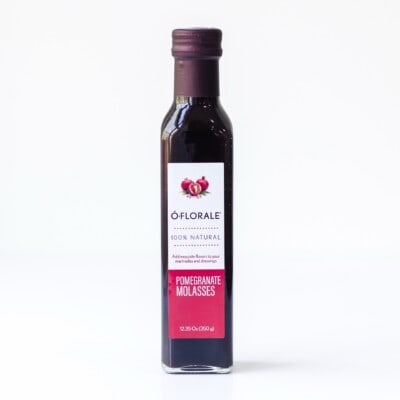
*This post has recently been updated with new information for the readers’ benefit.
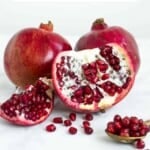


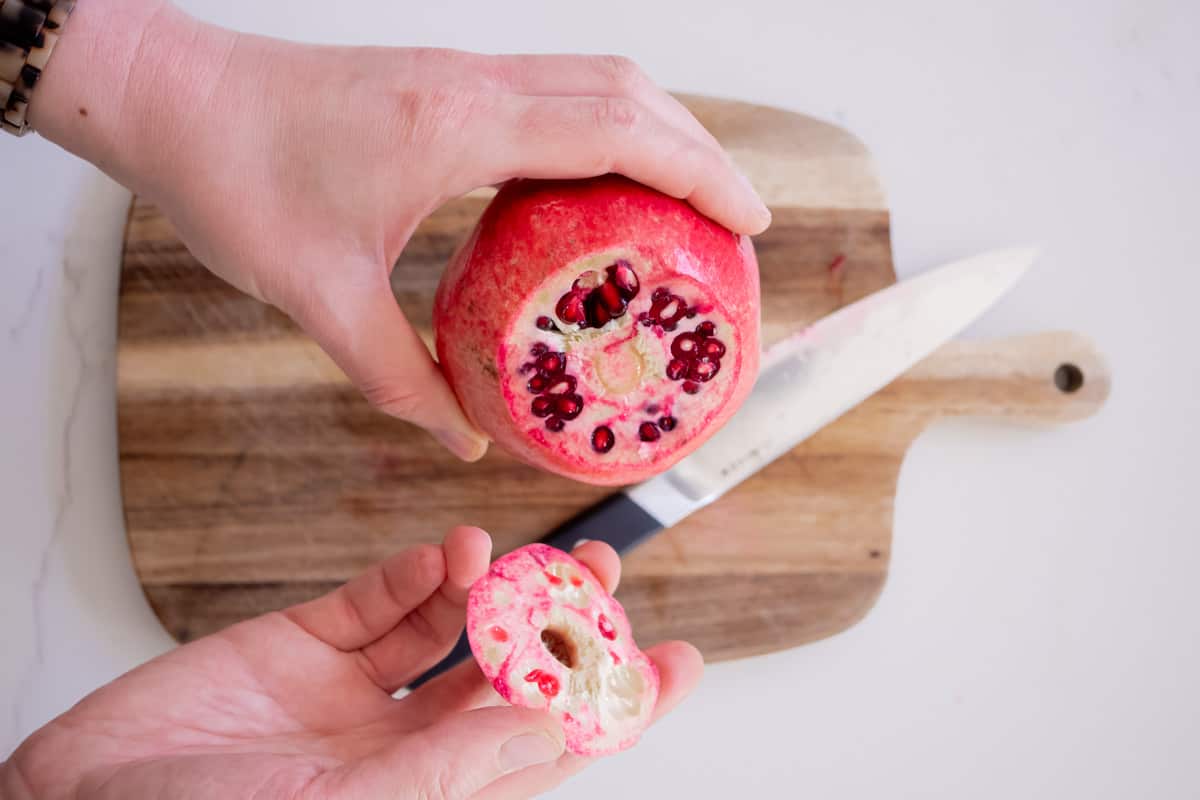
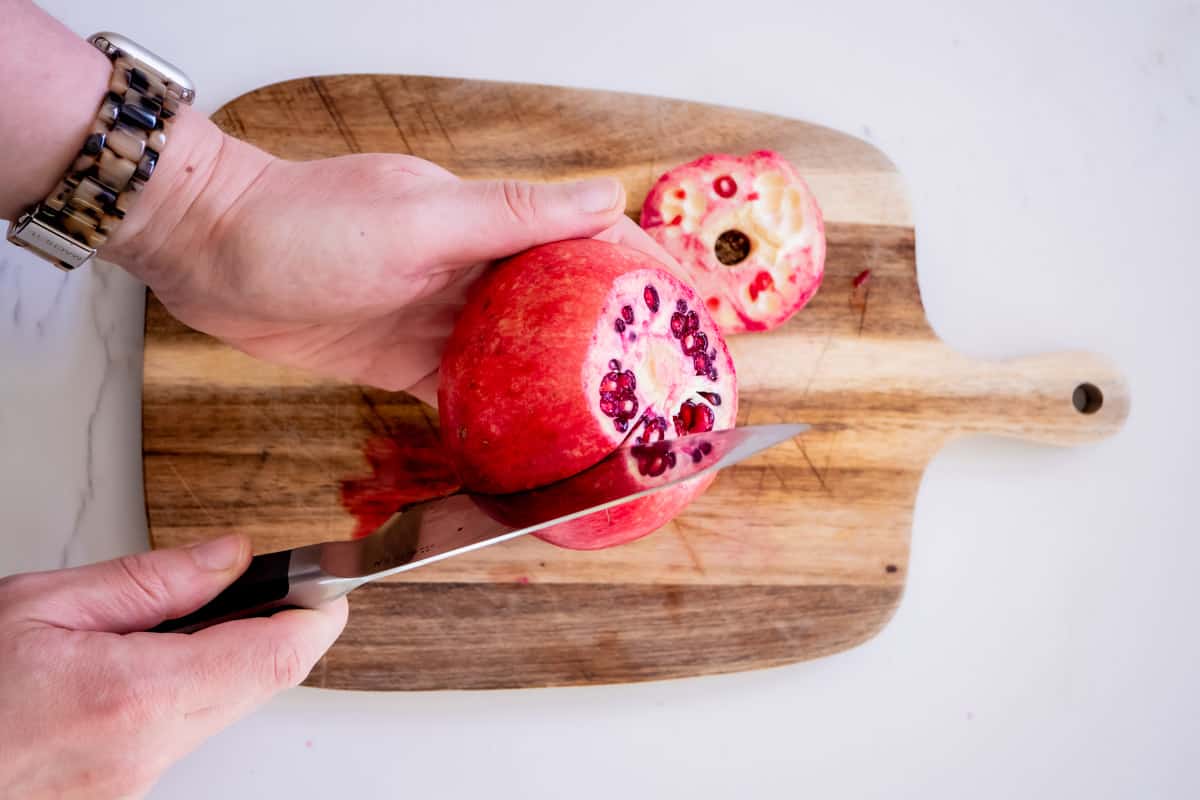
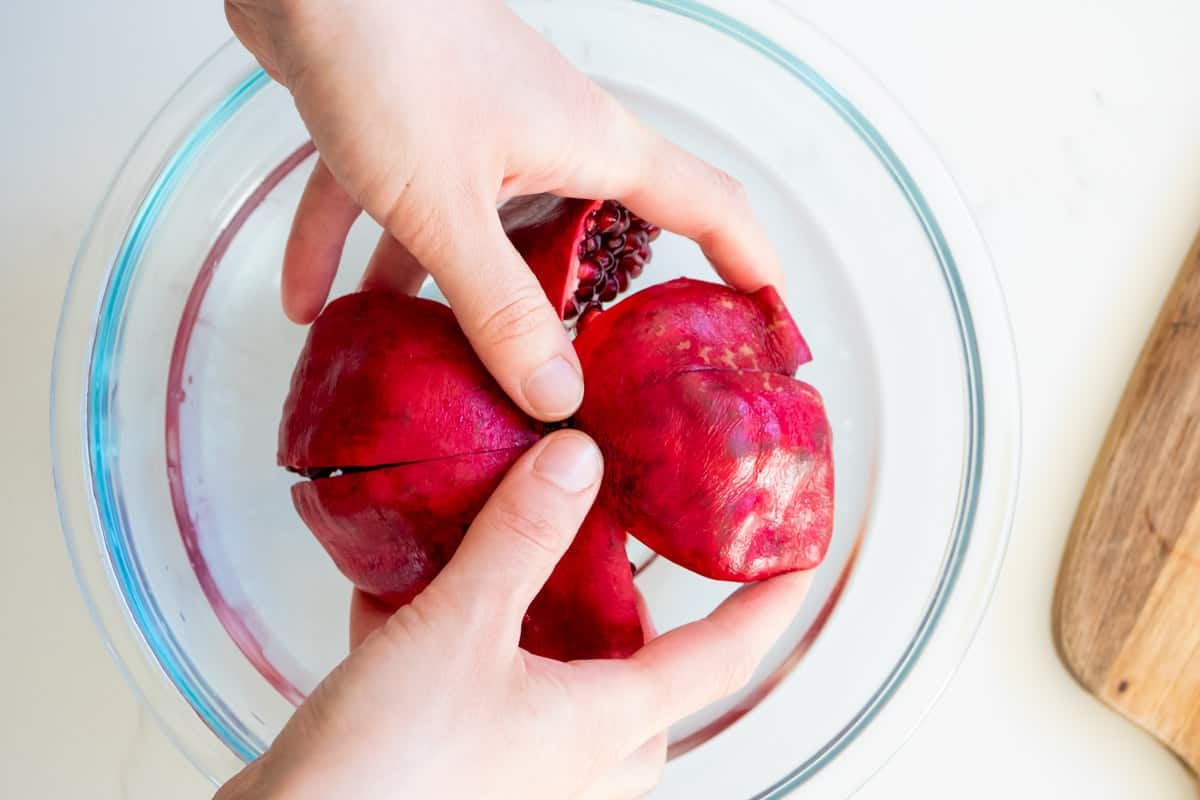
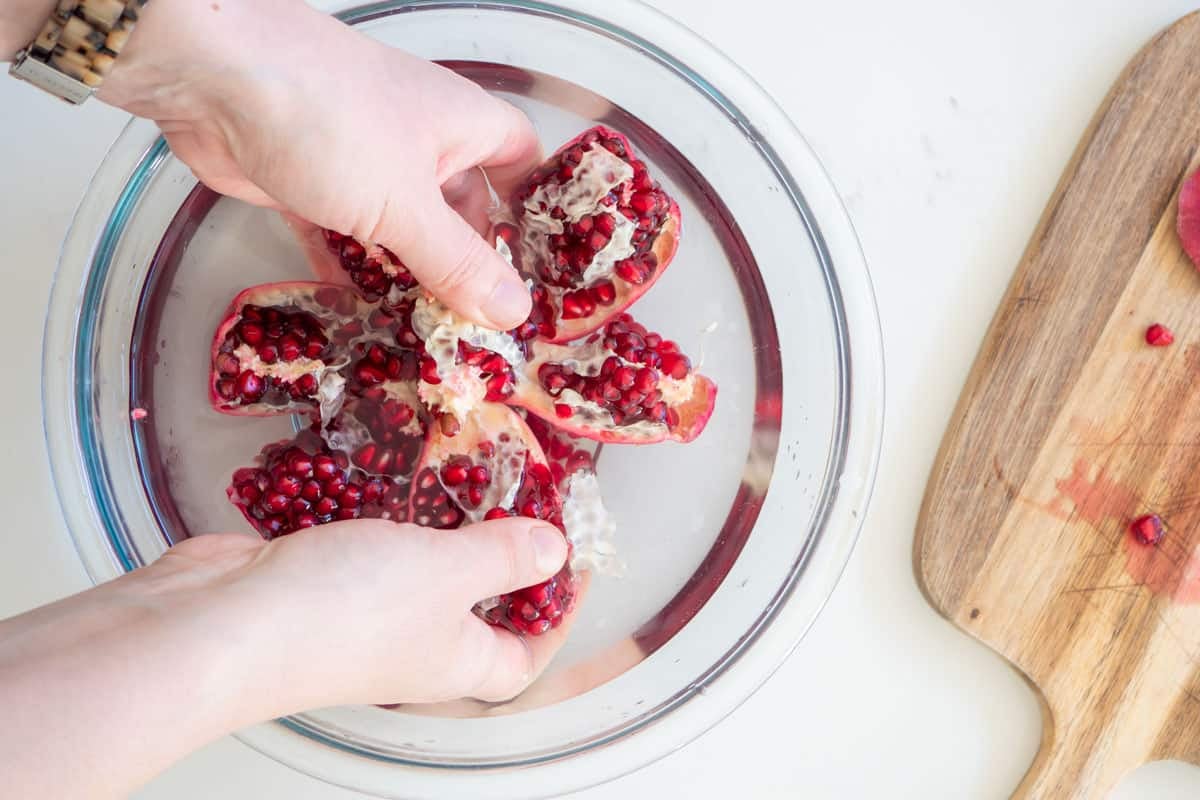
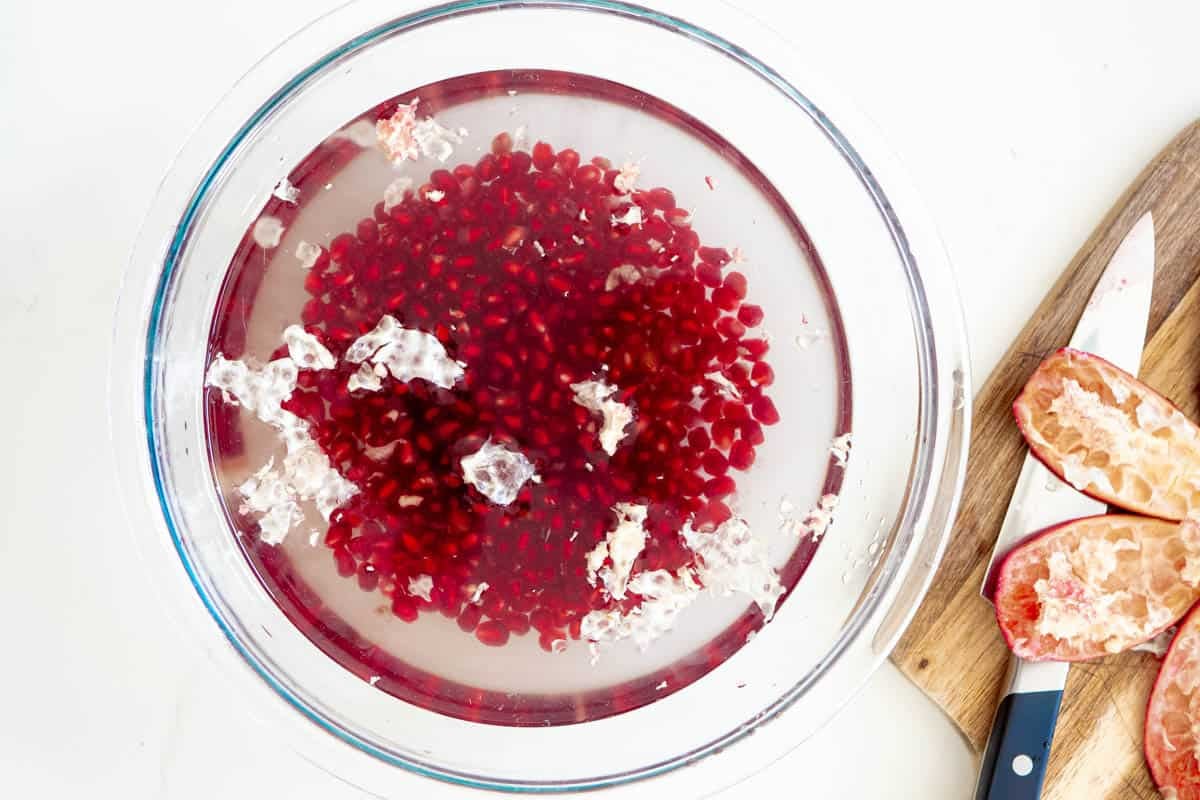


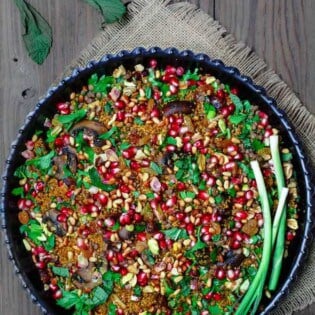

I’ve tried this method of separating the pith from the seeds in a bowl of water. However, the water essentially washed the juice off the seeds. But thank you for finally revealing that more juice can be obtained by grinding or smacking the seeds. I’ve never liked eating the seeds whole.
When I turned it over per step 4 I said “it worked”!! First time doing this – so glad I read through recipe and printed up the instructions. It was easy – thank you!!